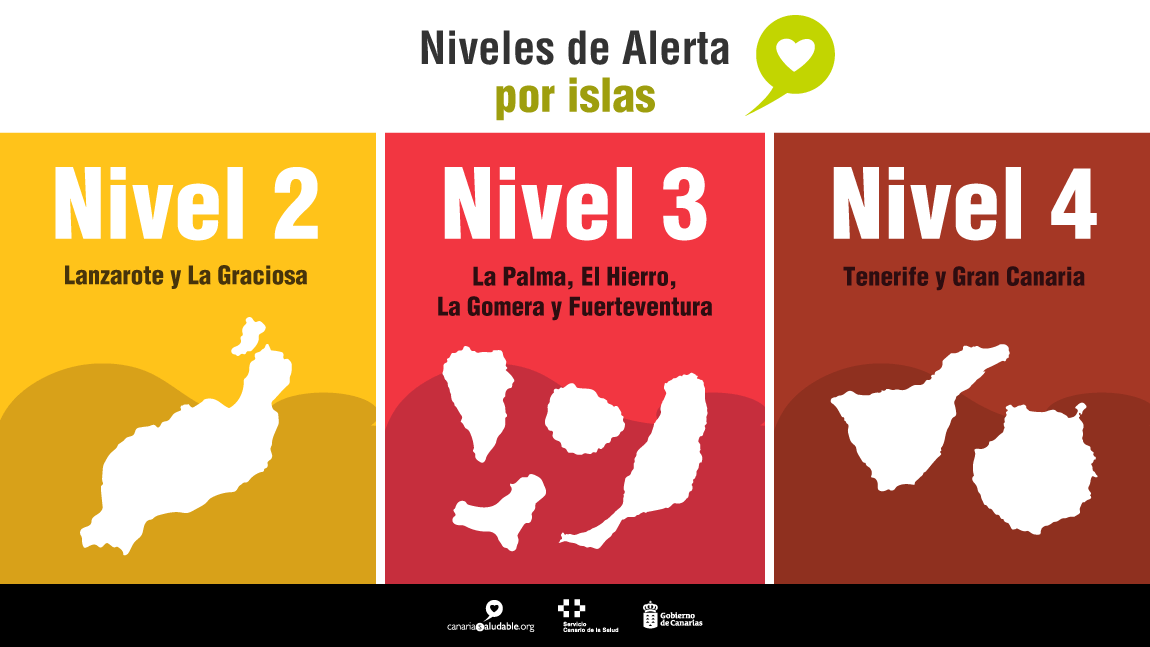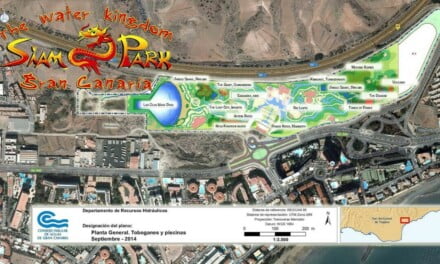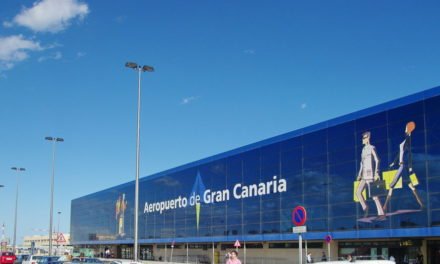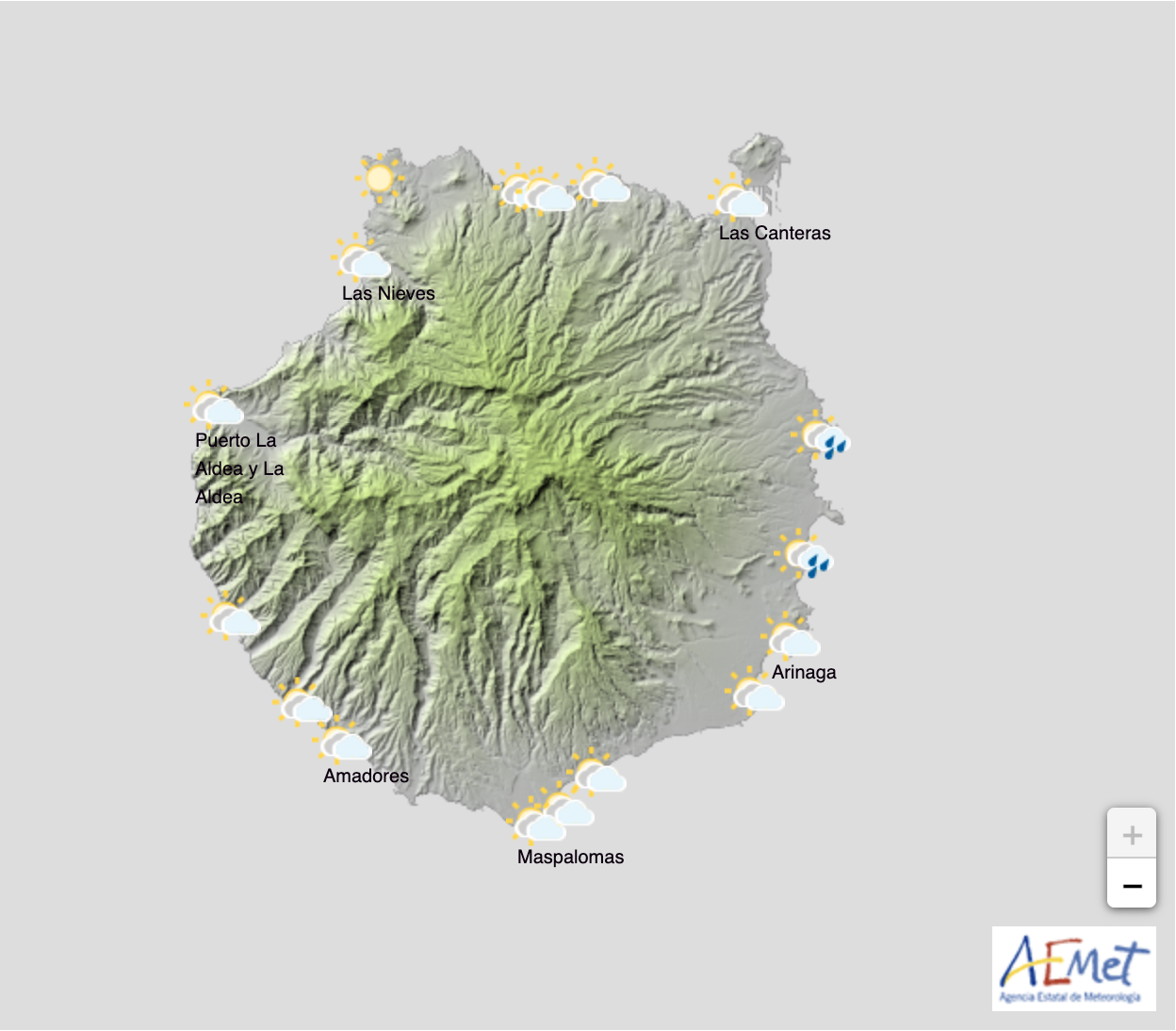The Canary Islands Government Council held on Thursday, February 17, agreed to continue with the de-escalation of the restrictions in force to contain the pandemic caused by COVID-19.
To do this, two unique packages of measures have been established, to be applied depending on the level of risk for each island. New regulations approved this week, specify more flexible rules for for the islands of Tenerife and Gran Canaria and others Lanzarote, Fuerteventura, La Palma, La Gomera and El Hierro.
They clarified that the “health alert levels” are determined by the epidemiological and care indicators established by the Ministry of Health, while the “measures” are for protection and control and are agreed by the regional government based on the parameters reached and the trend that the evolution of the pandemic presents at all times.
In the current situation, there is still high transmission of the virus, but it is having a limited healthcare impact in relation to the total number of cases. This, they say, allows for a gradual relaxation of prevention and control measures, while still maintaining alert levels.
The measures agreed will come into force after publication in the Official Gazette of the Canary Islands.
The de-escalation process began on January 7, when measures corresponding to Alert Level 4 were modulated, a process that continued last week with the relaxation of some measures, in applying the alert level restrictions to each island.
The continued downward trend over recent weeks, both in the Cumulative Incidence at 7 and 14 days, has encouraged a continuation of the process of relaxation of the measures, something which is also taking place in other regions of the country, with some have already announced the end of the restrictions.
 Most notable measures
Most notable measures
For the islands of Gran Canaria and Tenerife, the most outstanding measures are:
- General capacity : 75% outdoors and 50% indoors.
- Groups of people in spaces for public and private use, closed or outdoors : 8 people maximum, except cohabitants.
- Closing times in establishments and activities: 03:00.
- Nightlife : 75% outdoors and 50% indoors, at tables of up to 8 people closing by 03:00.
- Hotels and restaurants : 75% capacity outdoors and 50% indoors, at tables of 8 people and closing time by 03:00.
- Practice of non-federated physical and sports activity outdoors and in sports facilities and centres : 75% capacity outdoors and 50% indoors and in groups of a maximum of 8 people, except cohabitants.
- Federated sports practice at a regional or island level, outdoors or in closed spaces, and non-federated sports practice outdoors : 85% public capacity outdoors and 75% public capacity indoors.
- Cultural activity : in open-air public spaces it will have 85% capacity and in closed cultural and artistic venues and establishments 75%.
- Essential retail stores : the maximum capacity in closed spaces is set at 75%.
- Health centres : visits are more flexible, supervised by centre staff and the established prevention measures will be extreme.
For the rest of the islands: Lanzarote, Fuerteventura, La Palma, La Gomera and El Hierro, the most outstanding measures are:
- General capacity : 100% outdoors and 75% indoors.
- Groups of people in spaces for public and private use, indoors or outdoors : 12 people maximum, except cohabitants.
- Closing times: 04:00.
- Nightlife : 100% outdoors and 75% indoors, at tables of 12 people and closing at 04:00.
- Hotels and restaurants : 100% capacity outdoors and 75% indoors, at tables of 12 people and closing time at 04:00.
- Practice of non-federated physical and sports activity outdoors and in sports facilities and centres : 100% capacity outdoors and 75% indoors and in groups of a maximum of 12 people, except cohabitants.
- Federated sports practice at a regional or island level, outdoors or in enclosed spaces, and non-federated sports practice outdoors : 100% public capacity outdoors and 75% public capacity indoors.
- Cultural activity : in open-air public spaces 100% capacity and in enclosed cultural and artistic venues and establishments 75%.
- Health centres : visits are normally allowed in hospitals.
Transport measures for all islands
- Discretionary public transport in passenger car vehicles and rental vehicles with a driver, with up to nine seats including the driver, are allowed to use all of the rear seats of the vehicle, as well as those offered in the driver’s row of seats, when the rear seats have been previously exhausted, except when the driver can be considered a person at risk.
- Capacity on regular urban and metropolitan land public transport is set at 100% of the maximum capacity allowed for the respective vehicles. Adequate ventilation and/or air renewal must be guaranteed, as well as the rest of the general measures for the prevention and control of SARS-CoV-2
 The Canary Islands Ministry of Health this week updated the health alert levels, after reviewing the epidemiological report from the General Directorate of Public Health, with consolidated data as of February 16.
The Canary Islands Ministry of Health this week updated the health alert levels, after reviewing the epidemiological report from the General Directorate of Public Health, with consolidated data as of February 16.
COVID-19 health indicators have allowed for the island of Lanzarote to be lowered to Level 2 (where La Graciosa is epidemiologically included), following the improvement of their epidemiological indicators.
The rest of the islands maintain their current Alert Levels. This means that Tenerife and Gran Canaria remain at Alert Level 4; and La Palma, Fuerteventura, El Hierro and La Gomera remain at Level 3.













